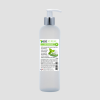ARNICA : THE ESSENTIAL FOR THE WELL-BEING OF JOINTS
Botanical name : Arnica montana
Family: Asteraceae
Part used: flower
Main activities: anti-inflammatory, analgesic, anti-echymotic, antimicrobial.
Therapeutic use: hematomas, sprains, muscle and joint pain, local phlogosis, insect bites, etc.
Arnica montana is an extremely well known plant in human phytotherapy and is also widely used in veterinary phytotherapy. Arnica montana is more and more talked about, and more and more Arnica-based products are available today. What does Arnica look like and what are its properties?
Arnica montana is a herbaceous perennial plant with a single, hairy stem that can grow up to 50 cm high. The rhizome of the plant is deep and creeping, while the flowers are yellow-orange and single per stem. Flowering starts in May and lasts until the end of July.
Arnica montana is mainly used externally. With an anti-inflammatory and analgesic effect, it is a valuable aid for local pain control: Arnica montana is also very useful to treat bruises and resorb post-traumatic edema. The scientific texts of phytotherapy recommend the use of Arnica montana in the following situations:
- Contusions
- Haematomas
- Sprains / traumas
- Edema due to a trauma
- Rheumatic disorders
- Inflammations of the oral cavity
- Muscle and joint pain
- Inflammations caused by insect bites
In our specific field of application, i.e. in the equestrian world, Arnica montana is a precious ally in the treatment of joint pain after training and as a relaxing gel for the legs to be used after each competition and training.
A good Arnica montana cream could therefore be of great help:
- Alleviate muscle pain after work
- Treatment of localized pain due to trauma
- Treatment of joint pain
- Treatment of joint pain in older horses
- Defatigates joints
- Soothe hives due to insect bites
Always apply Arnica montana creams to non-irritated skin.
The ideal is to use creams that do not contain high concentrations of Arnica montana, as high amounts could cause skin sensitization: just use a cream with good quality raw material and a good concentration (20-25%).


